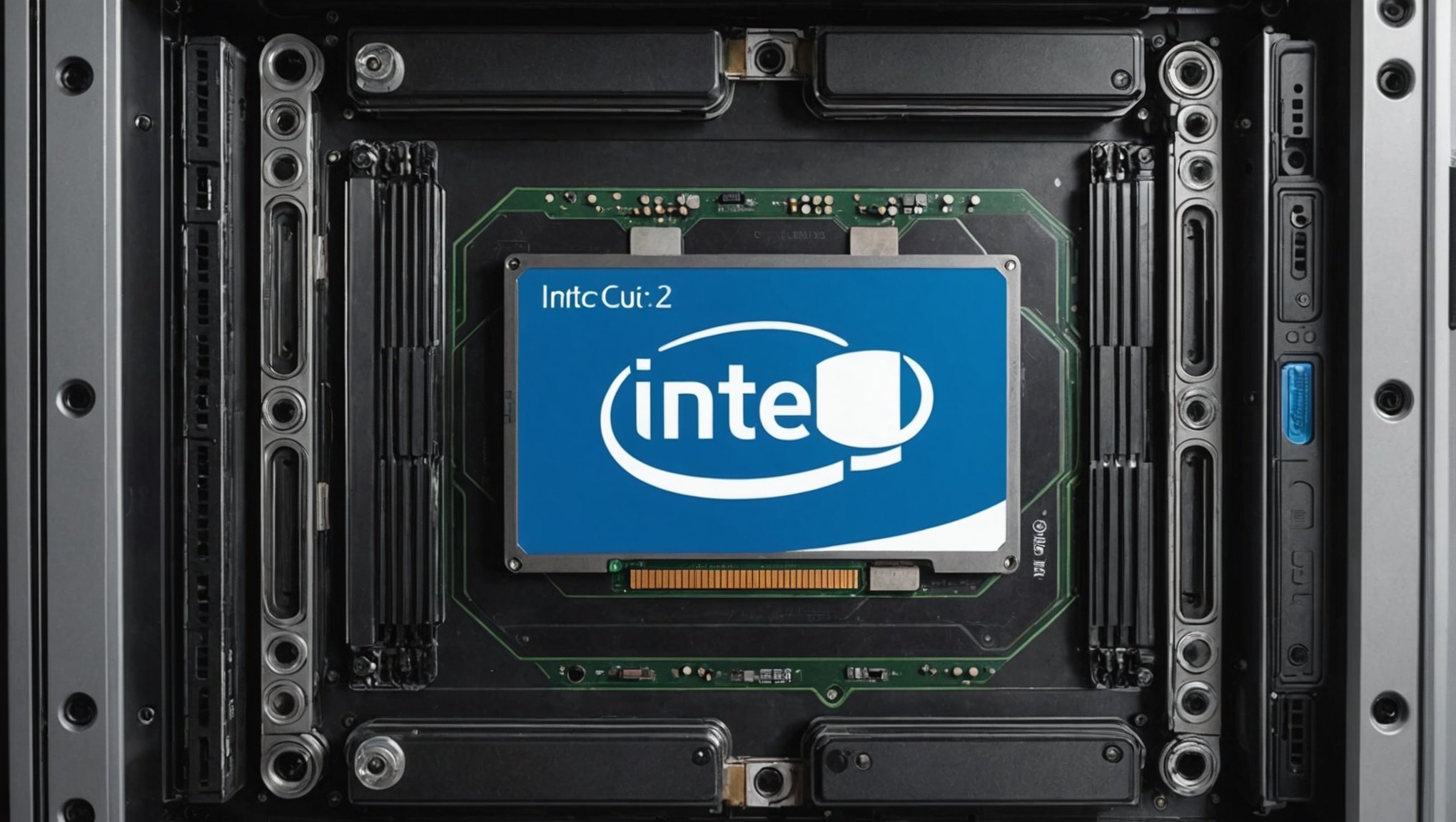Configuring a safe file server using Intel NUC and Windows Server 2022 requires an understanding of both hardware and software security principles. This guide explores effective strategies to ensure your data remains protected against potential threats. By leveraging the unique capabilities of Intel NUC alongside the robust features of Windows Server 2022, you can create a reliable and secure file server environment. Discover the best practices that empower you to keep your files safe and enhance your organization's digital resilience.
Overview of Intel NUC and Windows Server 2022
The Intel NUC is a compact yet powerful mini-PC that is ideal for various computing tasks, including serving as a file server. Its hardware capabilities include high-performance processors, efficient cooling systems, and expandable storage options, making it a versatile choice for personal and professional use. The small form factor of the Intel NUC allows it to fit into tight spaces while maintaining robust performance.
Also read : Ultimate Guide: Setting Up a High-Performance 3D Rendering Workstation with AMD Threadripper 3960X
Windows Server 2022 is the latest iteration of Microsoft's server operating system, offering enhanced security features, hybrid capabilities with Azure, and improved application platform support. It is designed to handle demanding workloads and provides a stable environment for server applications, making it an excellent choice for file server setups.
Utilising an Intel NUC for a file server setup with Windows Server 2022 presents several benefits. The combination of the NUC's compact design and the server's advanced features results in a powerful and efficient file server solution. This setup offers scalability, allowing users to expand storage and computing power as needed. Additionally, the energy efficiency of the Intel NUC helps reduce operational costs, making it a cost-effective solution for small to medium-sized businesses.
Also to discover : Mastering Virtual Machines on Your Lenovo ThinkPad X1 Extreme: A Step-by-Step Guide to Configuring VMware Workstation
Hardware Requirements for File Server Configuration
When setting up a file server using an Intel NUC, it's essential to consider the appropriate hardware specifications to ensure optimal performance. Several Intel NUC models are suitable for this purpose, each offering unique benefits based on your specific needs.
Recommended Intel NUC Models
For a file server, models like the Intel NUC 11 Pro and Intel NUC 10 Performance are highly recommended. These models provide robust processing power and ample connectivity options, making them ideal for handling file server tasks efficiently.
Storage Options: SSD vs HDD
Choosing between SSD and HDD storage options is crucial. SSDs offer faster data access speeds, enhancing the overall performance of the server. However, HDDs provide larger storage capacities at a lower cost, which might be preferable for extensive data storage needs.
RAM and Processor Specifications
To achieve optimal performance, consider equipping your Intel NUC with at least 8GB of RAM. For processor specifications, opting for Intel Core i5 or i7 processors will ensure the server can handle demanding workloads and multiple simultaneous connections without compromising speed or efficiency.
Installing Windows Server 2022
Setting up Windows Server 2022 on an Intel NUC involves several key steps to ensure a smooth installation and optimal performance.
Step-by-Step Installation Guide
Begin by creating a bootable USB drive with the Windows Server installation files. Insert the USB into the Intel NUC and power on the device. Access the BIOS setup by pressing the appropriate key during startup, usually F2 or Delete. Set the USB drive as the primary boot device, then save and exit the BIOS. The NUC will boot from the USB, initiating the setup process. Follow the on-screen instructions to choose the installation type and partition the drive as needed.
Licensing Considerations
Before proceeding, ensure you have a valid Windows Server 2022 license. This is crucial as it allows access to updates and support. Microsoft offers various licensing options, including Standard and Datacenter editions, each catering to different business needs.
Initial Configuration Settings
Post-installation, configure settings to enhance server performance. Set up network connections, adjust power settings for energy efficiency, and enable security features like Windows Defender. These initial configurations help in achieving a stable and secure server environment.
Configuring Network Settings for Security
Proper network configuration is crucial for maintaining a secure file server environment. Begin by setting up static IP addresses and DNS settings to ensure consistent network connectivity. A static IP address prevents potential conflicts and makes it easier to manage the server remotely. Configure DNS settings to enhance network reliability and performance.
Firewall Setup
Configuring the Windows Firewall is essential for protecting your server from unauthorized access. Enable the firewall and customise rules to allow only necessary traffic. This step involves specifying which ports and applications can communicate with the server, reducing vulnerability to external threats.
Best Practices for Network Segmentation
Implementing network segmentation is a best practice to bolster security. Divide the network into smaller segments, each with its own security policies. This approach limits exposure and contains potential breaches, ensuring that sensitive data remains protected. Regularly review and update these security settings to adapt to evolving threats and maintain a robust defense against cyberattacks.
Implementing User Access Controls
Proper user permissions and access control are essential for maintaining a secure and efficient file server environment. Utilizing Active Directory simplifies the management of user accounts and permissions, ensuring that only authorized individuals have access to sensitive data.
Creating User Accounts and Groups in Active Directory
Begin by creating user accounts in Active Directory, assigning each user to relevant groups. This approach streamlines permission management, as permissions can be applied to groups rather than individual users. Organizing users into groups based on their roles or departments enhances both security and efficiency.
Configuring Permissions for Shared Resources
Configuring permissions for shared resources is critical. Assign appropriate access levels, such as read, write, or modify, to ensure users can perform their tasks without compromising data security. Regularly review and update these permissions to adapt to changing organizational needs.
Utilizing Group Policies for Security Management
Group Policies are a powerful tool for enforcing security settings across the network. They allow administrators to define security requirements, such as password policies and software restrictions, centrally. Implementing consistent Group Policies helps maintain a secure environment, reducing the risk of unauthorized access and data breaches.
Data Protection Strategies
Ensuring data protection is vital for any file server setup. Regular data backup procedures are the cornerstone of a robust protection strategy. Schedule automatic backups to secure data against accidental loss or corruption. Use both onsite and offsite solutions to balance accessibility and security.
Implementing RAID Configurations for Redundancy
RAID configurations offer a practical approach to achieving data redundancy. Different RAID levels provide varying degrees of fault tolerance and performance. For instance, RAID 1 mirrors data across multiple drives, ensuring that data remains accessible even if one drive fails. RAID 5 or 6 can further enhance redundancy while maintaining efficient storage use.
Strategies for Disaster Recovery Planning
A comprehensive disaster recovery plan is essential for minimizing downtime during unexpected events. Begin by identifying critical data and applications, and prioritize their restoration. Develop a detailed recovery procedure, including roles and responsibilities. Regularly test and update the plan to ensure its effectiveness. Employing cloud-based solutions can also facilitate rapid recovery, providing additional layers of protection.
Security Measures and Best Practices
Implementing robust file server security is crucial for protecting sensitive data and maintaining system integrity. One effective measure is utilizing encryption to safeguard data both in transit and at rest. Encryption ensures that even if data is intercepted, it remains unreadable without the correct decryption key, thus adding a critical layer of protection.
Selecting the right antivirus solutions is equally important. Opt for comprehensive antivirus and anti-malware programs that offer real-time protection and regular updates. These solutions help detect and neutralize threats before they can compromise your server. Consider solutions that provide centralized management for easier oversight and control.
Regular security audits are vital for identifying vulnerabilities and ensuring compliance with security policies. Conduct these audits periodically to evaluate the effectiveness of existing measures and to update them as necessary. Keeping your system updated with the latest security patches and software updates is also essential in defending against emerging threats. By maintaining a proactive stance on security, you can significantly enhance the resilience of your file server against potential cyberattacks.
Troubleshooting Common Issues
Encountering common problems with your Intel NUC file server setup can be frustrating, but understanding how to troubleshoot effectively can save time and resources. Connectivity issues are frequent, often stemming from incorrect network configurations or faulty hardware. Begin by verifying that all cables are securely connected and that network settings, such as IP addresses and DNS configurations, are correctly set. If problems persist, consider rebooting the router or switch to refresh network connections.
Performance bottlenecks can also affect server efficiency. These may arise from insufficient RAM, outdated drivers, or inadequate storage solutions. To resolve these, ensure your system meets the recommended specifications, including adequate RAM and up-to-date drivers. Consider upgrading to SSDs if HDDs are slowing down data access speeds.
If these steps do not resolve the issues, it might be time to seek technical support. Professional assistance can provide in-depth diagnostics and solutions, especially for complex problems that are beyond basic troubleshooting. Engaging with technical support ensures that your server remains reliable and efficient, minimizing downtime and maintaining productivity.
Resources and Further Reading
For those seeking to deepen their understanding of file server management with an Intel NUC and Windows Server 2022, a wealth of resources is available. The official Microsoft documentation for Windows Server 2022 is an invaluable starting point. It provides comprehensive guides and technical details essential for both beginners and advanced users. This documentation covers installation, configuration, and troubleshooting, ensuring you have the necessary information at your fingertips.
Engaging with community forums is another excellent way to enhance your knowledge. Platforms such as TechNet and Spiceworks offer vibrant communities where you can seek advice, share experiences, and find solutions to specific challenges. These forums are frequented by both professionals and enthusiasts, making them a rich source of practical insights and support.
In addition to documentation and forums, consider exploring additional tools and software designed to streamline file server management. Tools like Server Manager and PowerShell scripts can automate routine tasks, improving efficiency and reducing the risk of errors. These resources, combined with active participation in community discussions, can significantly enhance your file server setup and management capabilities.











